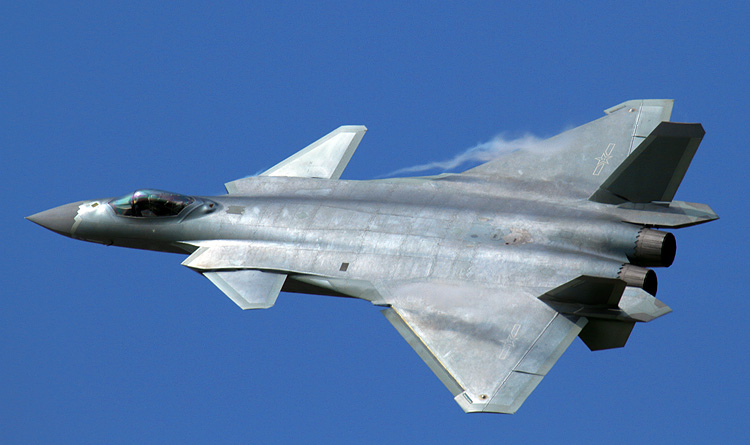INDIAN ARMED FORCES CHIEFS ON OUR RELENTLESS AND FOCUSED PUBLISHING EFFORTS

The insightful articles, inspiring narrations and analytical perspectives presented by the Editorial Team, establish an alluring connect with the reader. My compliments and best wishes to SP Guide Publications.

"Over the past 60 years, the growth of SP Guide Publications has mirrored the rising stature of Indian Navy. Its well-researched and informative magazines on Defence and Aerospace sector have served to shape an educated opinion of our military personnel, policy makers and the public alike. I wish SP's Publication team continued success, fair winds and following seas in all future endeavour!"

Since, its inception in 1964, SP Guide Publications has consistently demonstrated commitment to high-quality journalism in the aerospace and defence sectors, earning a well-deserved reputation as Asia's largest media house in this domain. I wish SP Guide Publications continued success in its pursuit of excellence.
- Prime Minister Modi Visits Punjab’s Adampur Air Base, Interacts with Airmen after Successful ‘Operation Sindoor’; Stern Message to Pakistan
- The layered Air Defence systems that worked superbly, the key element of Operation Sindoor
- Operation Sindoor | Day 2 DGMOs Briefing
- Operation Sindoor: Resolute yet Restrained
- India's Operation Sindoor Sends a Clear Message to Terror and the World – ‘ZERO TOLERANCE’
- Japan and India set forth a defence cooperation consultancy framework, talks on tank and jet engines
IAF’s Next Fighter Aircraft — One step forward, two steps back?
 |
By Lt. General P.C. Katoch (Retd) Former Director General of Information Systems, Indian Army |
The Standing Committee for Defence while presenting its report to the Parliament in December 2017 slammed the government for neglecting military modernization. The report pointed out that persisting critical military operational gaps have adversely affected the country's defence preparedness. In case of Indian Air Force (IAF), at least 45 fighter squadrons (18-21) jets in each) are required by the IAF to tackle the two-front scenario. But it's making do with just 33 squadrons as of now, which will go down to 19 by 2027, and 16 by 2032 due to retirement of older jets. The 59,000 cr contract for 36 French Rafale fighters in September 2016 will do little to arrest this alarming drawdown. "The issue of depletion in squadron strength has been taken up repeatedly by the committee over the years. However, no concrete measures seem to have been taken (till now)," said the panel. But news has emerged recently that government has scrapped its two-year-old plan to produce 114 single-engine fighters with foreign collaboration under the “Make in India” framework, at an estimated cost of 1.15 lakh cr (almost $18 billion), possibly because of the Government-Opposition fracas over the over the 59,000 cr contract for 36 French Rafale jets.

In between there was also the media hype about the Indian Air Force (IAF) not being in favour of the indigenous Tejas fighters which was needless debate because the IAF has already placed orders for the Tejas. With reference to the Rafale, there have been write-ups about excessive costs especially when taking into account the 10 year maintenance package, one scholar even blaming the military (read IAF) for being “enamoured of foreign armaments and habituated to spendthrift ways”. Little does this writer realize that every decision for weapon / weapon-system procurement is taken by MoD. More importantly, the qualitative requirements (QR) if changed, is done ‘by MoD’ with the gun fired from the shoulder of the concerned service. Besides looking at the past, criticalities are created by design through the MoD-DRDO nexus to enable bulk imports when faced with emergent situations. Isn’t the same happening for making up voids of IAF? Tejas can’t make up total deficiency and ping-pong is being played about the balance despite repeated warnings by the Standing Committee on Defence that persisting critical military operational gaps have adversely affected the country's defence preparedness?
Why has the government been toying with the plan of 114 single-engine fighters with foreign collaboration under the “Make in India” framework, and suddenly now jumped to include the twin-engine variety? Anyone browsing the net or the Janes Weapon Systems cursorily would know what single-engine fighters are available globally, be it the Swedish Gripen, US F-16 or F-35. While asking the IAF to take up a new proposal taking both single and twin-engine fighters into account, media quoting an unnamed official source says, “The original plan placed an unnecessary restriction on only single-engine fighters, which limited the competition to just two jets (American F-16 and Swedish Gripen-E). The aim is to increase the contenders and avoid needless allegations later.” So, obviously the fear is about “needless allegations” rather than the urgency of making up critical voids of the IAF. It was the then Defence Minister Manohar Parrikar who had advised IAF to go in for the single-engine production line because he said the country could afford only 36 of the twin-engine Rafales for meeting its “critical operational necessity” immediately. Single-engine fighters, of course, have a lower acquisition and operating cost even if there is a slight compromise in capability. Now the IAF has to start working on a new plan based on its operational requirements, required transfer of technology (ToT), and other aspects. The further two-year delay now implies the IAF will not be able to reach its sanctioned strength of 42 squadrons even by 2032 as projected earlier. Ironically, the new project to include both single and twin-engine fighters will, in effect, be a repeat of the MMRCA project first proposed by the IAF in 2001-2002. The formal tender or request for proposal (RFP) for the MMRCA project, under which the first 18 jets were to come in flyaway condition and the rest 108 being licensed produced by HAL, was floated in 2007. So, the IAF is actually been made to run around the mulberry tree, while the number of its fighters have been dwindling.





